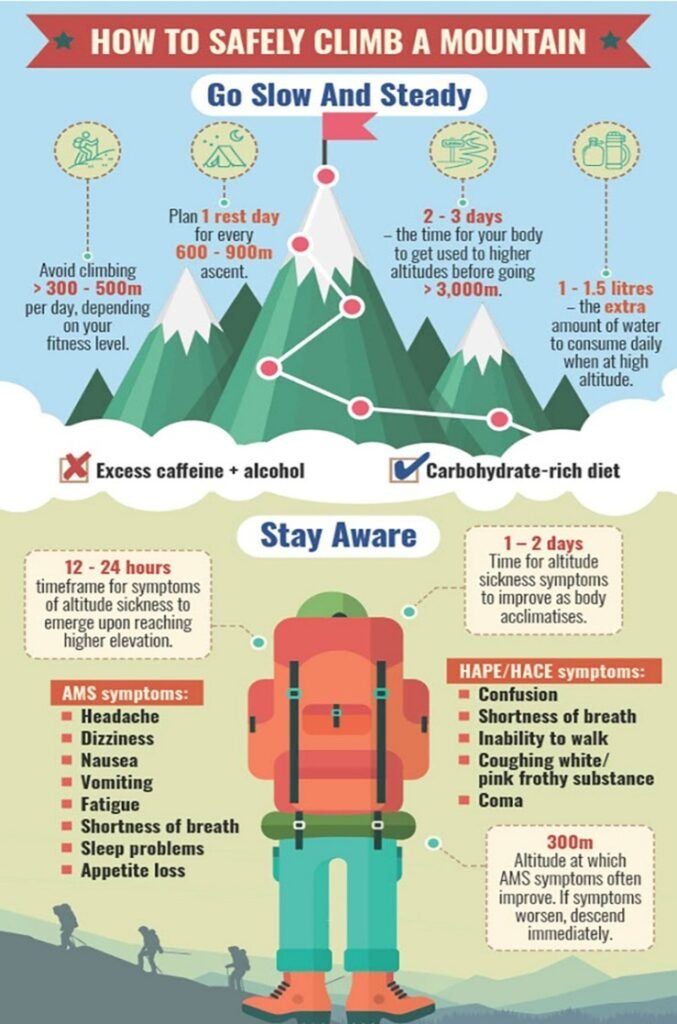
- High-altitude sickness poses a severe risk to tourists in the inner Himalayas due to reduced oxygen levels and inadequate infrastructure.
- Conditions like Acute Mountain Sickness (AMS) can escalate into life-threatening situations, requiring urgent intervention.
- AMS occurs when the body cannot acclimatise to elevations above 8,000 feet due to reduced oxygen.
- Early signs include headache, nausea, fatigue, and breathlessness.
- Severe cases may result in High-Altitude Pulmonary Edema (HAPE) or High-Altitude Cerebral Edema (HACE).
- High altitudes cause hyperventilation and increased red blood cell production, straining the heart and lungs.
- Travellers should ascend slowly, resting every 3-4 days above 3,000 meters and limiting daily elevation increases to 500 meters.
- Drugs like Acetazolamide aid acclimatisation; Dexamethasone and Nifedipine are used for severe cases or prevention.
- Immediate Descent: Moving 300-1,000 meters lower often improves symptoms.
- Supplemental Oxygen: Use of oxygen or portable hyperbaric chambers in emergencies.
- Pharmacological Relief: Temporary symptom relief with medications, but descent is crucial.
Dig Deeper: Read about HAPE and HACE conditions.

